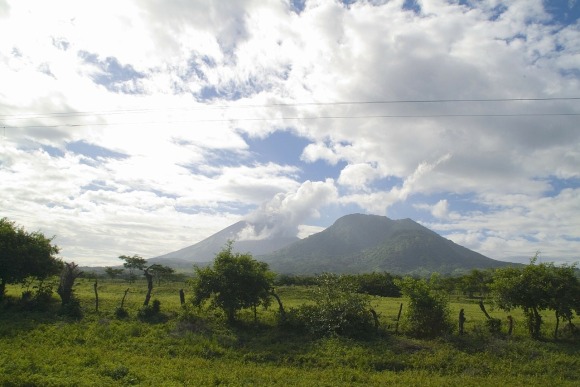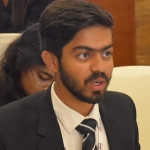Indigenous tribes and their land are under threat across the South American continent. Brazil, in particular hit the headlines in recent months as President Bolsonaro announced plans to legalise the commercial exploitation of natural resources in Indigenous territories. But the countries of Central America too are facing similar struggles with attacks on Indigenous communities and pressure from farmers and loggers. The following article by Karthik Subramaniam looks at the escalation of attacks on indigenous groups and their lands in Nicaragua.
On 30th January 2020, six indigenous people belonging to the indigenous Mayagna tribe were killed and ten others were kidnapped in a reported attack by armed men. This incident occurred in the Bosawás Biosphere Reserve in the northern part of Nicaragua. The attack on this indigenous tribe is not an isolated one. There have been heightened conflicts in the region between the indigenous tribes and the new settlers over forest land that is the territory of the indigenous tribes. On 5th January 2020, Mark Rivas, an indigenous leader who had publicly denounced the grabbing of land by the logging industry, was shot to death.
The Bosawás Biosphere Reserve, along with three other neighbouring protected areas, forms the “Heart of the Mesoamerican Biocorridor”. Declared by the United Nations Education, Science, and Culture Organisation (UNESCO) as a World Biosphere Reserve in 1997, it serves as the home for around 22 different indigenous communities who contribute to its protection. The tribes that live in these areas depend on the forests for their subsistence. However, over the last few years, there has been what some indigenous tribes have termed an “invasion” by “colonists,” that has led to the massive deforestation of these forests. The invasion of these settlers, lured in by the promise of gold, the abundance of timber, and the plentiful maritime assets of the reserve, has led to them grabbing the ancestral lands of the indigenous population. These settlers include peasants, small- and large-scale farmers, wood smugglers, loggers, and ranchers.
The International Labour Organisation’s “Indigenous and Tribal Peoples Convention (N. 169)” (ILO 169) adopted in 1989 (which has been ratified by Nicaragua) was followed by up with the near unanimous adoption of the United Nations Declaration on the Rights of Indigenous Peoples (UNDRIP). Together, they greatly improved the rights of property of indigenous population, while also protecting them from the interference of the state. For instance, Article 8.2(b) of the UNDRIP mentions that States shall provide indigenous populations with effective mechanisms for the prevention of, and redress for, “Any action that has the aim of dispossessing them of their lands, territories or resources.”

Article 89 of the Constitution of Nicaragua describes that the State recognises the communal forms of land ownership among the ethnic population and provides recognition to the use and enjoyment of the waters and forests on these communal lands. Article 180 guarantees these communities the benefits of their natural resources, the effectiveness of their forms of communal property and the free election of their authorities and representatives. Law No. 14 amended the Agrarian Reform Law in 1986, which established in Article 31 that the state would provide the ethnic communities of Nicaragua with necessary lands so as to improve their standard of living.
The presence of these laws in Nicaragua that aim at protecting the property rights of the native population of the country clearly show that there exist intentions of the government to protect the rights of the ethnic population of the country. However, the mere intention of protecting the rights of these people is not enough.
In 2001, in a decision by the Inter-American Court of Human Rights in the Case of the Mayagna (Sumo) Awas Tingni Community v. Nicaragua, the government was found to be guilty of violating the right to property of the indigenous Awas Tingni population over their customary land by giving concessions to loggers within the traditional lands of these tribes. The legally binding nature of the decision bestowed on it by Article 68 of the American Convention of Human Rights (ACHR), of which the Republic of Nicaragua is a party to, implied that the government had to comply with the decision. Following this, it was only in 2008 that the government of Nicaragua granted the Tingi people title to around 74,000 hectares of forested land. Based on the 2001 decision, Law 445, or the Communal Land Law, was passed in 2003 which formally recognised the rights of the indigenous populations and ethnic communities to their historic territories and set up an institutional framework for the demarcation and titling of territories either as a single community or as a group of communities.
However, out of the 1,604,683 hectares of broadleaf forest the Bosawas Reserve had in 1987, only 1,039,945 were left by 2010. This implies that more than around 564,000 hectares of pristine forest were lost due to deforestation for the purposes of ranching and agriculture. The intense internal migration of people from the coastal and the central regions of the country looking for fertile land have been identified to be one of the primary contributors to this deforestation. While the human conflict is definitely problematic with respect to the rights of the indigenous population, many scientists are also concerned about the detrimental effect this is having on the region’s biodiversity.
For the preservation of the territories of the indigenous population that depend on these forests for sustenance, as well as for the conservation of the delicate ecosystem of the reserve, the government needs to take necessary steps. It is crucial for the authorities to take immediate action to prevent further violence and protect the land and resources of the indigenous population of Nicaragua.
ABOUT THE AUTHOR
 Karthik Subramaniam is an undergraduate student at NALSAR University of Law, Hyderabad, India. His main research interests lie in areas of alternate dispute redressal, including mediation and negotiation. He also dabbles in areas of international human rights and sports law.
Karthik Subramaniam is an undergraduate student at NALSAR University of Law, Hyderabad, India. His main research interests lie in areas of alternate dispute redressal, including mediation and negotiation. He also dabbles in areas of international human rights and sports law.

